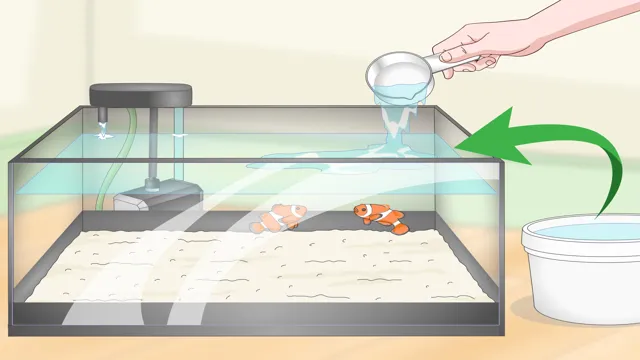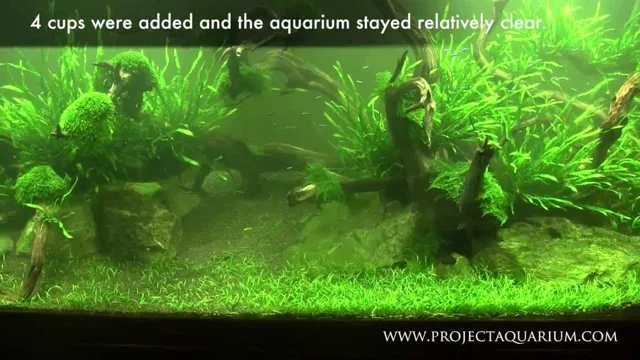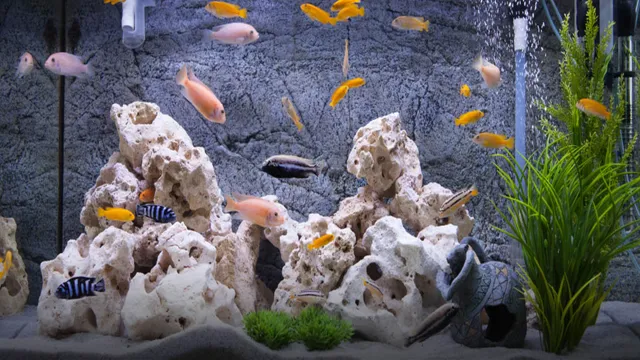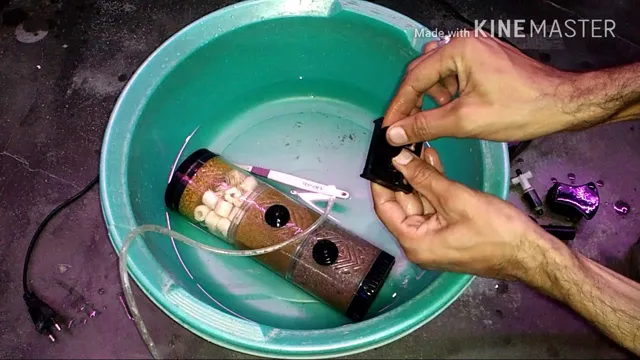Have you noticed that your aquarium water has become too salty for your fish to thrive? High salinity levels in the tank can cause a range of health issues, including dehydration, organ damage, and even death. Thankfully, lowering the salinity is not as complicated as you might think. With some patience and careful attention to detail, you can restore your aquarium to a safe and healthy living environment for your aquatic pets.
In this blog post, we will give you some tips on how to lower aquarium salinity, so that you can keep your fish happy and healthy. So, let’s dive in and explore the world of aquariums!
Test the Water Salinity
If you’re wondering how to lower the salinity in your aquarium, the first step is to test the water’s current salinity level. This can be done using a hydrometer or a refractometer. Once you have your results, you can determine how much saltwater you need to replace with freshwater to lower the salinity to the desired level.
It’s important to do this gradually, as sudden changes in salinity can be harmful to fish and other aquatic life. Over the course of a few days, slowly add freshwater to the aquarium and test the salinity level daily until you reach your desired level. Remember to also monitor the pH and temperature to ensure a healthy and stable environment for your aquatic pets.
With patience and careful attention, you can easily lower the salinity in your aquarium and provide a comfortable home for your fish.
use a Refractometer to measure the salinity of the water
One of the most important things to keep in mind when setting up an aquarium is to ensure that the water is at the right salinity level. This is where a refractometer comes in handy. A refractometer is a tool that measures the specific gravity of the water, which is directly related to the salt concentration.
To use one, simply place a few drops of water on the refractometer prism, close it up and hold it to the light. The scale on the refractometer will give you a reading of the salinity level. It’s important to test the salinity of the water regularly, as it can fluctuate due to various factors such as evaporation or even adding new fish or coral to the tank.
Keep in mind that different types of fish or corals require different levels of salinity, so make sure you research the specific needs of your livestock. When it comes to maintaining a healthy aquarium, proper water salinity is key.

Check the Salinity of the Water in the Aquarium
Salinity of water in the aquarium is a crucial factor that needs to be monitored to ensure the health and wellbeing of your aquatic pets. There are various test kits available in the market that can help you measure the salt content of water in your aquarium. Ideally, a saltwater aquarium should have a salinity level between 30-35 parts per thousand (ppt) while a freshwater aquarium should have a salinity level of 0 ppt.
Testing the salinity is an easy process that can be completed in a matter of minutes. The test kit is generally a strip or liquid that needs to be dipped into the water and changes color depending on the salt content present. Regular testing of salinity levels can help identify any imbalances in the aquarium, and corrective measures can be taken to maintain the required salinity levels.
So, make it a point to check the salinity of your aquarium water periodically and ensure a healthy and thriving aquatic ecosystem for your pets to flourish.
Replace the Water in the Aquarium
If you’re struggling with high salinity levels in your aquarium, one effective way to lower it is by regularly replacing the water. By removing a portion of the water and replacing it with fresh water, you can dilute the high levels of salt in the tank. Typically, replacing around 10-15% of the water every week can help keep the salinity levels stable. (See Also: How to Make Dirt for Aquarium: A Step-by-Step Guide to Creating Healthy Substrate)
It’s important to ensure that the water you are adding in is of the same temperature and pH level as the existing water in the tank to avoid causing any stress to your fish. Additionally, make sure to use a dechlorinator to neutralize any harmful chemicals in the fresh water before adding it to the tank. Regular water changes not only help lower salinity levels but also promote a healthier and cleaner environment for your aquatic pets.
Use Fresh Water to Replace the Salt Water
When it comes to maintaining a healthy aquarium, water quality is crucial. While saltwater aquariums can be beautiful, they require a bit more upkeep compared to freshwater ones. One of the key tasks in maintaining a saltwater aquarium is replacing the water.
Using fresh water is essential in ensuring that your tank remains healthy. Saltwater tanks continuously evaporate, and with that evaporation comes an increase in salinity levels. Over time, this can be detrimental to the health of your fish and other marine life.
By replacing the saltwater with fresh water, you help restore the water’s natural balance and keep the aquarium thriving. It’s important to note that tap water may contain chemicals harmful to the marine life. Always use a water conditioner to remove any harmful substances before adding the fresh water to the tank.
Regular water changes are crucial in maintaining a healthy saltwater aquarium, so be sure to keep up with this essential task.
Replace Up to 20% of the Salt Water
If you’re looking to maintain a healthy aquarium, it’s essential to ensure that the water quality is optimal. One way to do this is by replacing up to 20% of the saltwater in the tank regularly. This helps to remove any built-up waste, toxins, and excess nutrients that can be harmful to the aquatic life.
It also replenishes the aquarium with fresh, clean water, providing the necessary minerals and nutrients for the healthy growth of plants and other living organisms. It’s important to note that you should not replace all of the water at once, as this can cause a shock to the animals and plants in the tank. Instead, gradually replace small portions of the water over a few days or a week, ensuring a smooth transition.
By replacing the water in your aquarium, you’ll be able to maintain a healthy and thriving aquatic environment for your pet fish and other marine life.
Wait for the Water to Mix Before Testing Salinity
When it comes to maintaining a healthy aquarium, one important task that is often overlooked is replacing the water. Over time, the water in your aquarium can accumulate excess waste and debris, which can cause harm to your fish and other aquatic inhabitants. To ensure the best living conditions for your water pets, it’s recommended to replace at least 10-20% of the water every 1-2 weeks.
Additionally, when testing the salinity levels of your aquarium water, it’s crucial to wait for the water to properly mix before taking a reading. If you don’t, you may end up with an inaccurate reading and potentially harm your aquatic pets. So, take the time to properly replace your aquarium water and wait for it to mix before testing for salinity to ensure a healthy and happy aquatic environment.
Trust me, your fish will thank you for it! (See Also: How to Get Crystal Clear Water in Marine Aquarium: Step-by-Step Guide)
Remove Salt with a Reverse Osmosis System
Aquarium enthusiasts often encounter the issue of high salinity levels in their tanks due to various reasons. With saltwater aquariums, maintaining the right balance of salinity is crucial for the health of marine life. Fortunately, a reverse osmosis system can aid in lowering aquarium salinity.
This system works by passing the water through a semipermeable membrane, effectively removing the excess salt as well as other impurities. Using a reverse osmosis system not only helps to reduce high salinity levels in your aquarium but it can also prevent diseases, keep the water clear, and help to establish a healthy environment for fish and other aquatic creatures. Consider investing in a high-quality reverse osmosis system that can make the process simple and efficient.
By effectively managing salinity levels, you can enjoy a thriving aquarium with stunning and healthy marine life.
Install and Use a Reverse Osmosis System
If you live in an area with salty water, you know how frustrating it is to have to deal with the terrible taste. Fortunately, there is a solution: a reverse osmosis system. This filtration system is designed to remove the salt from your water, and it’s easy to install and use.
All you have to do is hook it up to your sink faucet, and you’re good to go. The system works by using a semi-permeable membrane that only allows water molecules to pass through. This means that the salt and other impurities are left behind, giving you clean and fresh-tasting water.
Not only will you enjoy better-tasting water, but you’ll also be doing your health a favor by consuming less salt. Say goodbye to salty water and hello to a refreshing glass of water with a reverse osmosis system!
Run the RO System and Replace Salty Water
If you’re looking to remove salt from your water supply, a reverse osmosis system (RO system) is an excellent solution. This type of water filtration system uses a semipermeable membrane to filter out salt and other impurities, leaving you with clean and fresh drinking water. To run the RO system, you’ll first need to connect it to your water supply and ensure the system is properly installed and activated.
Once it’s up and running, the system will begin to filter out the salty water by pumping it through the membrane, leaving behind clean and pure water. As the system operates, you will need to periodically replace the salty water with fresh water to ensure optimal performance. This will involve manually switching the system from filtration mode to rinse mode, which will flush out the briny water and replace it with fresh water.
By following these simple steps, you can remove salt from your water supply and enjoy clean, fresh, and healthy drinking water whenever you need it.
Conclusion
In conclusion, lowering the salinity of your aquarium can be a finicky task, but with a little patience and persistence, it can be done. It’s important to always test your water and make gradual adjustments to avoid any shock to your aquatic friends. And remember, even though they might love the ocean, your fish won’t be salty if you lower the salinity in their home. (See Also: How to Add Shrimp to a New Aquarium: A Beginner’s Guide to Proper Shrimp Introduction)
“
FAQs
What is aquarium salinity and why is it important to maintain?
Aquarium salinity refers to the amount of salt present in the fish tank water. It is important to maintain the right level of salinity for the survival and health of aquatic life.
What are the consequences of high aquarium salinity levels?
High aquarium salinity levels can lead to dehydration and stress among fish and other aquatic creatures. It can also negatively impact the growth and development of coral and other marine plants.
How can I measure the salinity level in my aquarium?
You can measure the salinity level in your aquarium using a refractometer, which is a device that measures the refractive index of a liquid.
How often should I check the salinity level in my aquarium?
It is recommended to check the salinity level in your aquarium at least once a week, or more often if you are making any changes to the water.
What is the ideal salinity level for a saltwater aquarium?
The ideal salinity level for a saltwater aquarium is typically between 1.020 and 1.025, but it can vary depending on the species of fish and other aquatic life in the tank.
How can I lower the salinity level in my aquarium?
You can lower the salinity level in your aquarium by slowly adding freshwater to the tank, or by using a reverse osmosis system to remove excess salt.
Are there any other ways to maintain the salinity level in my aquarium?
Yes, you can maintain the salinity level in your aquarium by regularly performing partial water changes, using a high-quality salt mix, and monitoring the levels of calcium and other minerals in the water.







